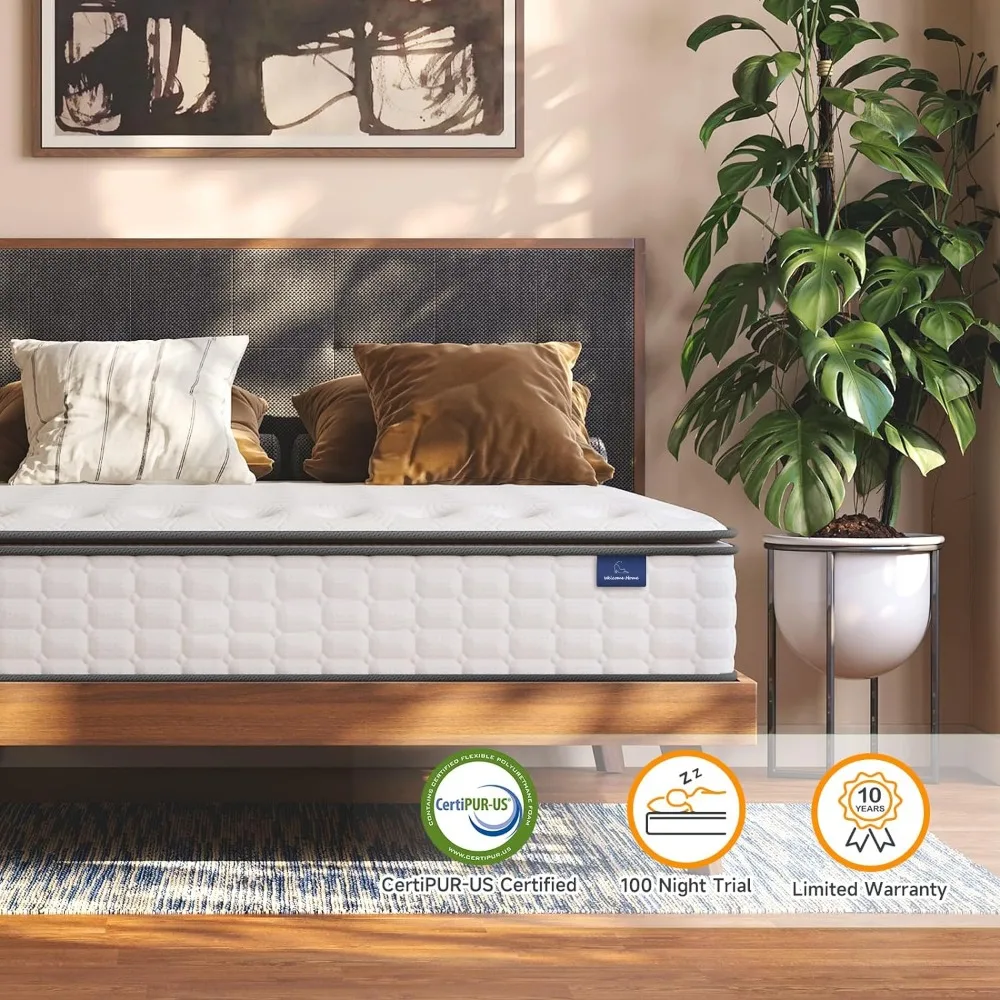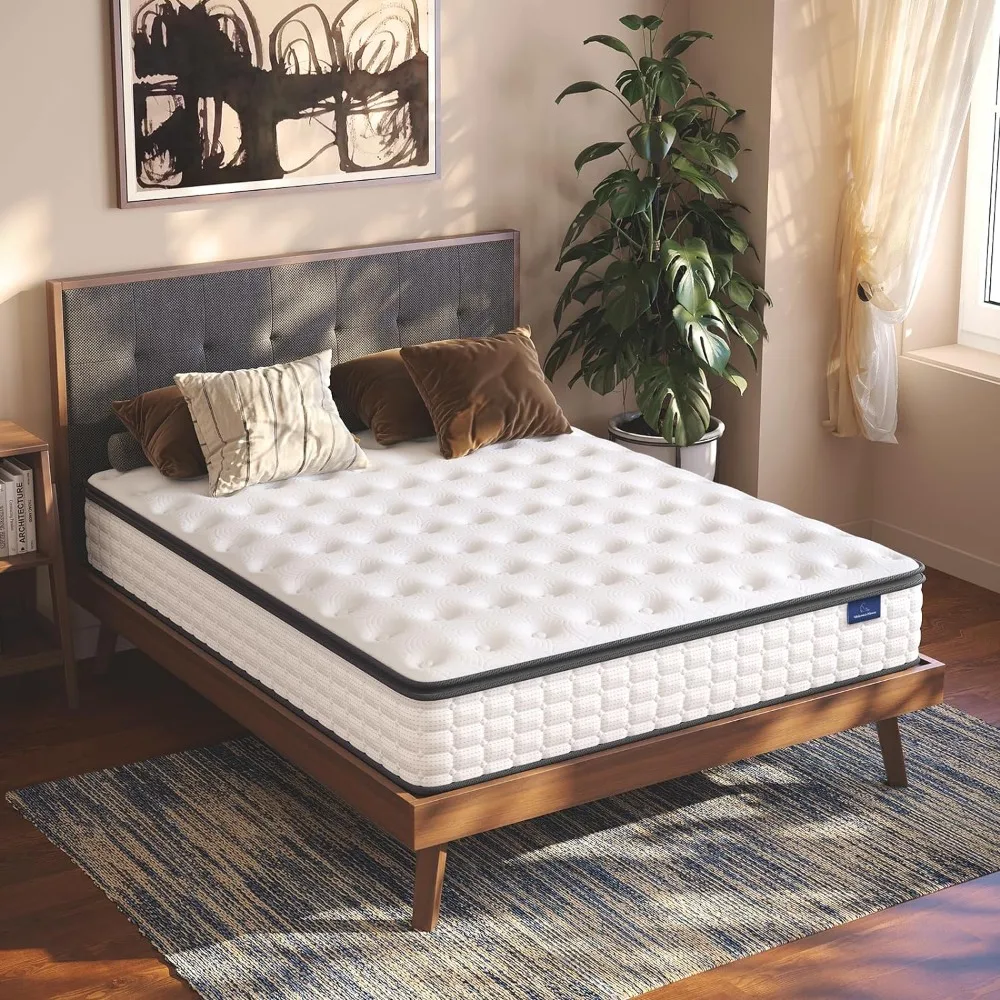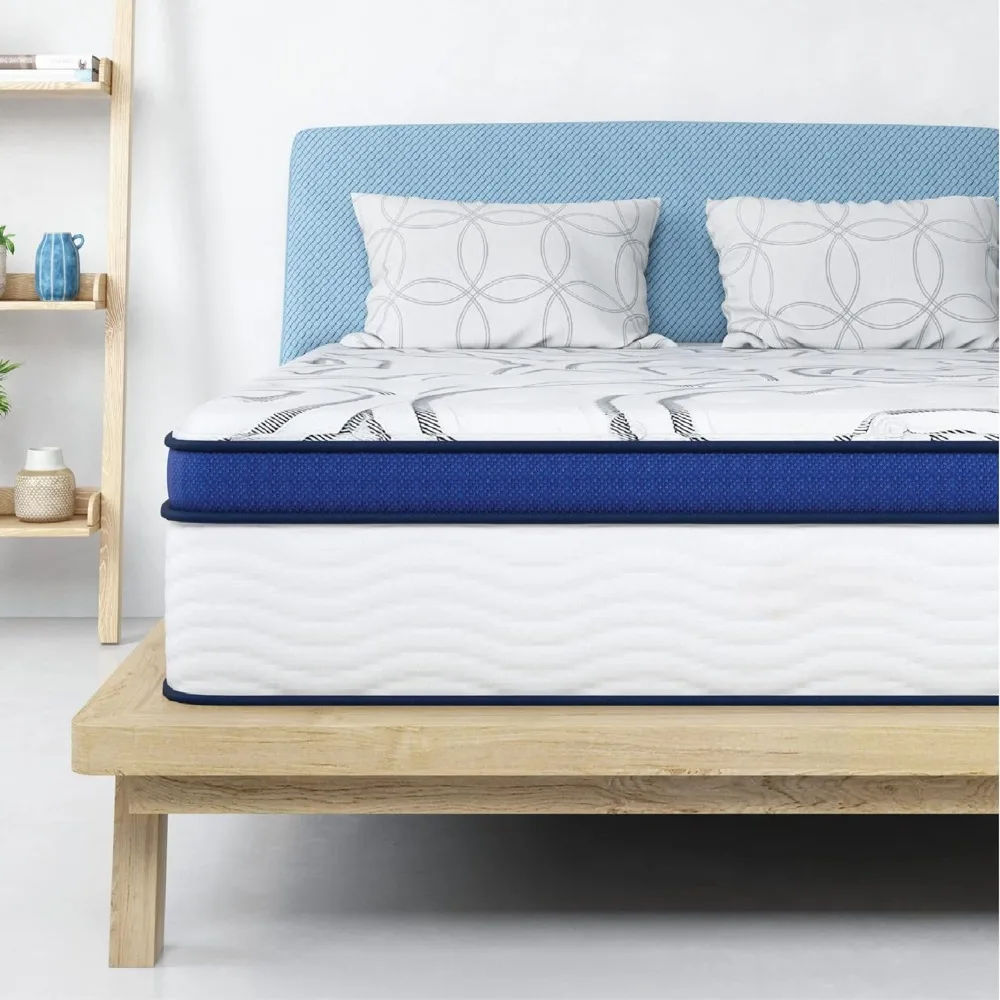Introduction to Pillow Top Mattresses
A pillow top mattress is a type of mattress that features an extra layer of padding stitched on top of the mattress. This additional layer, which resembles a pillow, is what gives the mattress its name. The pillow top layer is usually filled with materials like memory foam, latex, wool, fiberfill, or a combination of these, providing an extra plush and cushioned surface. This construction is designed to enhance comfort by offering a softer sleeping surface without compromising the underlying support provided by the mattress core.
The concept of a pillow top mattress has been embraced by many mattress manufacturers due to its ability to cater to a wide range of sleeping preferences. Whether you’re a side sleeper who needs extra cushioning for the shoulders and hips or someone who suffers from joint pain and requires pressure relief, a pillow top mattress can offer the balance of softness and support needed for a comfortable night’s sleep.

Construction and Materials
The construction of a pillow top mattress sets it apart from other mattress types. The most distinctive feature is the sewn-in layer of padding on top of the mattress core. This layer can vary in thickness, typically ranging from 1 to 4 inches, and often fill with materials that provide a cushioning effect. The core of the mattress, which can be made from innerspring coils, memory foam, latex, or a hybrid of these materials, forms the supportive base.
Innerspring pillow top mattresses are among the most common and feature a traditional coil system for support. The pillow top layer adds a plush feel, offsetting the potential firmness of the coils. Memory foam pillow tops, on the other hand, combine the contouring benefits of memory foam with the added softness of the pillow top layer, making it an ideal choice for those seeking pressure relief. Latex pillow tops know for their resilience and ability to conform to body contours while providing a cooler sleeping surface.
The materials used in the pillow top layer can significantly influence the feel and performance of the mattress. Natural materials like wool and cotton offer breathability and moisture-wicking properties, while synthetic materials like polyurethane foam and fiberfill provide a more consistent plush feel. Hybrid pillow tops often incorporate both natural and synthetic materials to strike a balance between comfort and durability.
Benefits of a Pillow Top Mattress
The appeal of a pillow top mattress lies in its numerous benefits, which cater to a wide range of sleepers. One of the primary advantages the enhance comfort provided by the additional cushioning layer. This makes pillow top mattresses particularly popular among side sleepers and individuals who experience pressure points or joint pain. The plush surface allows for better contouring to the body’s curves, relieving pressure on critical areas such as the shoulders, hips, and knees.
Another significant benefit is the potential for improved spinal alignment. A well-designed pillow top mattress can offer a combination of softness and support that helps maintain the natural curvature of the spine. This is essential for preventing back pain and ensuring that you wake up feeling refreshed rather than stiff. The supportive core of the mattress, whether it’s innerspring, memory foam, or latex, works in tandem with the pillow top layer to provide a balanced sleeping surface.
Pillow top mattresses also excel in motion isolation, making them a great choice for couples. The added layer of padding absorbs and reduces motion transfer, ensuring that movements on one side of the bed do not disturb the other sleeper. This can lead to a more restful and uninterrupted sleep, especially important for light sleepers.
Drawbacks of a Pillow Top Mattress
Despite their many advantages, pillow top mattresses are not without their drawbacks. One of the most common concerns is the potential for the pillow top layer to sag or flatten over time. The extra layer of padding, while providing initial comfort, may wear out faster than the mattress core, leading to a decrease in support and uneven sleeping surface. This can particularly problematic if the pillow top layer is not well-constructed or made from lower-quality materials.
Another potential drawback, the heat retention associate with some pillow top materials, particularly memory foam. The additional layer of padding can trap heat, making the mattress feel warmer and potentially uncomfortable for those who tend to sleep hot. However, this issue can mitigate by choosing a pillow top mattress with cooling features, such as gel-infused foam or breathable materials like latex.
Pillow top mattresses can also be heavier and more cumbersome to move compared to traditional mattresses. The added layer of padding increases the overall weight, which can make tasks like rotating the mattress or changing the bedding more challenging. Additionally, the loftier profile of pillow top mattresses may require deeper fitted sheets, which could be an inconvenience if your bedding is not compatible.
Comparing Pillow Top Mattresses to Other Types
When deciding whether a pillow top mattress is right for you, it’s helpful to compare it to other types of mattresses. Traditional innerspring mattresses, for example, tend to offer more bounce and less conforming surface compared to pillow tops. While they provide good support, they may not offer the same level of pressure relief and softness that pillow top mattresses do. Memory foam mattresses, on the other hand, are known for their contouring ability and motion isolation but can feel too firm or hot for some sleepers. A pillow top layer added to a memory foam mattress can help mitigate these issues by introducing an additional layer of softness and breathability.
Latex mattresses celebrate for their durability and natural resistance to dust mites and mold. While they offer a resilient and supportive sleeping surface, they may lack the plush comfort that a pillow top can provide. A latex pillow top mattress can strike a balance between the supportive qualities of latex and the softness of the pillow top layer, making it an attractive option for those seeking both comfort and longevity.
Hybrid mattresses, which combine elements of innerspring, memory foam, and latex, design to offer the best of all worlds. Adding a pillow top layer to a hybrid mattress can further enhance comfort by providing additional cushioning without sacrificing support. This makes hybrid pillow top mattresses a versatile choice for a wide range of sleepers, particularly those who value both softness and structure in their sleeping surface.

Choosing the Right Pillow Top Mattress
Selecting the right pillow top mattress involves considering several factors to ensure it meets your specific needs and preferences. One of the primary considerations is the firmness level. While the pillow top layer adds a layer of softness, the overall firmness of the mattress will depend on the core materials and construction. Firmness levels can range from plush to medium to firm, and your choice should be based on your sleeping position and comfort preferences. Side sleepers often prefer a softer mattress for cushioning, whereas back and stomach sleepers may require a firmer surface for proper spinal alignment.
Material composition is another crucial factor. Determine whether you prefer the bounce and support of innerspring, the contouring properties of memory foam, or the resilience of latex. Each material has distinct characteristics that affect the feel and performance of the mattress. Additionally, consider any specific features that may enhance your sleep experience, such as cooling technology for hot sleepers or zoned support for targeted pressure relief.
Budget is also an important consideration. Pillow top mattresses are available at various price points, and while it’s essential to invest in a quality mattress for better sleep, there are options to suit different budgets. Keep in mind that the cost may vary based on the materials used, brand reputation, and additional features. It’s advisable to read customer reviews and ratings to gauge the durability and performance of the mattress before making a purchase.

Conclusion
In summary, a pillow top mattress offers a unique combination of comfort and support, making it a popular choice for many sleepers. Its construction, featuring an additional layer of padding, provides a plush and cushioned surface that enhances comfort while maintaining the underlying support of the mattress core. The benefits of a pillow top mattress include improved pressure relief, better spinal alignment, and reduced motion transfer, making it suitable for a wide range of sleeping preferences.
However, like any product, pillow top mattresses come with their drawbacks, such as potential sagging and heat retention. Comparing pillow top mattresses to other types can help you determine if it’s the right fit for your needs. When choosing a pillow top mattress, consider factors such as firmness, material composition, and budget to find a mattress that aligns with your comfort and support requirements. With proper care and maintenance, a pillow top mattress can provide you with restful and rejuvenating sleep for years to come, making it a worthwhile investment for your overall well-being.










